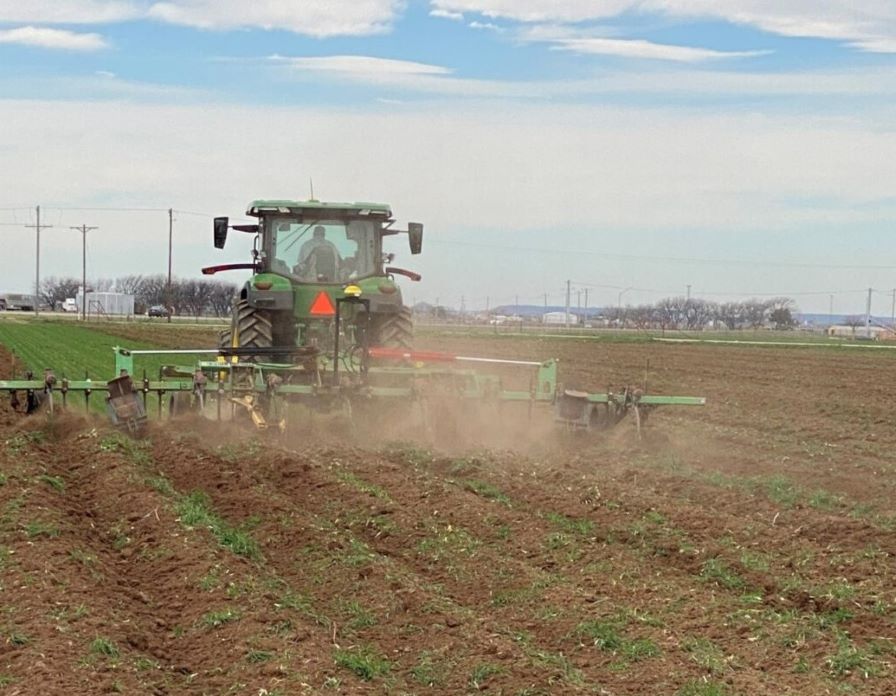Texas A&M Research Provides Science Behind New Cotton Technology
By Steve Byrns, Texas A&M AgriLife Extension
The dream of many Texas cotton farmers plagued by dwindling irrigation water and drought might be to someday produce more fiber using the same amount of water.
That dream is fast becoming reality, thanks to a commercially-available seed treatment from Indigo Ag called Indigo Cotton. The science behind the treatment stems directly from research started by Dr. Greg Sword, a Texas A&M entomologist.
But the dream gets better.
Sword and Indigo – his industry partner – say that under some conditions the production or yield can be as much as 10 percent higher than untreated crops and needs no special crop management inputs beyond a simple endophyte microbial coating of the planting seed. Endophytes are microbes that can live inside plants, analogous to the microbes that live inside humans and play important roles in human health. That means no specialized farming equipment is required, no genetically modified organism technology is associated with the process, no more acreage is taken into account, there’s no need for increased planting rates, and no additional pesticides or fertilizer applications need be applied over what’s normally used, Sword said.
In fact, Sword’s lab has shown that some endophytes can reduce pest pressure on cotton as well. In short, the process means more profit for the producer with no added stress on the environment.
“As an entomologist, my first research initially focused on the important effects microbes could have in conferring resistance in cotton to insects and nematodes and potentially affect cotton yields in that way,” Sword said. “But I also started to suspect that water stress was involved, and we conducted field trials showing increased yields were possible. This is what started getting the early attention from industry in 2012-2013.”
Now, there are 50,000 acres planted with the Indigo Cotton treated with a microbe from Sword’s lab – most of it in the High Plains of Texas. This part of Texas, often called “The World’s Largest Cotton Patch,” is the most intense area of cotton production in the U.S. and sits over the huge, but slowly dwindling Ogallala Aquifer.
In 2013, Texas A&M AgriLife Research, with assistance from Texas A&M Technology Commercialization, inked an exclusive licensing deal with Indigo to have the rights to commercialize the fungal endophytes that Sword’s lab collected from cotton.
“Through joint research with Indigo, we began to find that many of the microbes I collected were also having effects in conferring water stress resistance,” Sword said.
Sword said that it was his early work that clearly showed the microbes could be applied to seeds that could then be planted under normal field conditions with observable effects on plant performance and yields.
Indigo has raised close to $156 million in private investment funding so far, with $100 million of that from the most recent round of fundraising, as noted by reports in the media, Sword said.
“That made a big splash, because it was the largest private equity fundraising effort ever in the agricultural technology sector to date,” Sword said. “So not only are the ag people paying attention now, but so are the finance/Wall Street types.
“Although Indigo’s first product is in cotton and based on a microbe from my lab, they have lots of other developments going on with other microbes in other crops,” Sword said. “But the cotton data was promising enough that it led to their first commercial offering being for cotton, and the strength of the cotton data surely helped them convince investors to invest. So it’s not exclusively due to the cotton data, but it definitely helped.”
So why should non-farmers care?
“Because producing more food and fiber with less water, or even producing the same amount with less water, is a critical global need as water becomes scarce and droughts become more common and widespread,” Sword said. “It is my hope that our partnership with Indigo is a strong start to a new kind of green revolution, where considerably more food and fiber can be produced without further taxing the water supply or environment.”
Source – Texas A&M AgriLife









